Do you ever have that feeling like the universe is trying to send you a message and you notice it, but then you are like ‘nah -universes don’t send messages to people, that’s dumb’? I think the universe is trying to tell me to plant lots of foxgloves. Is that dumb?
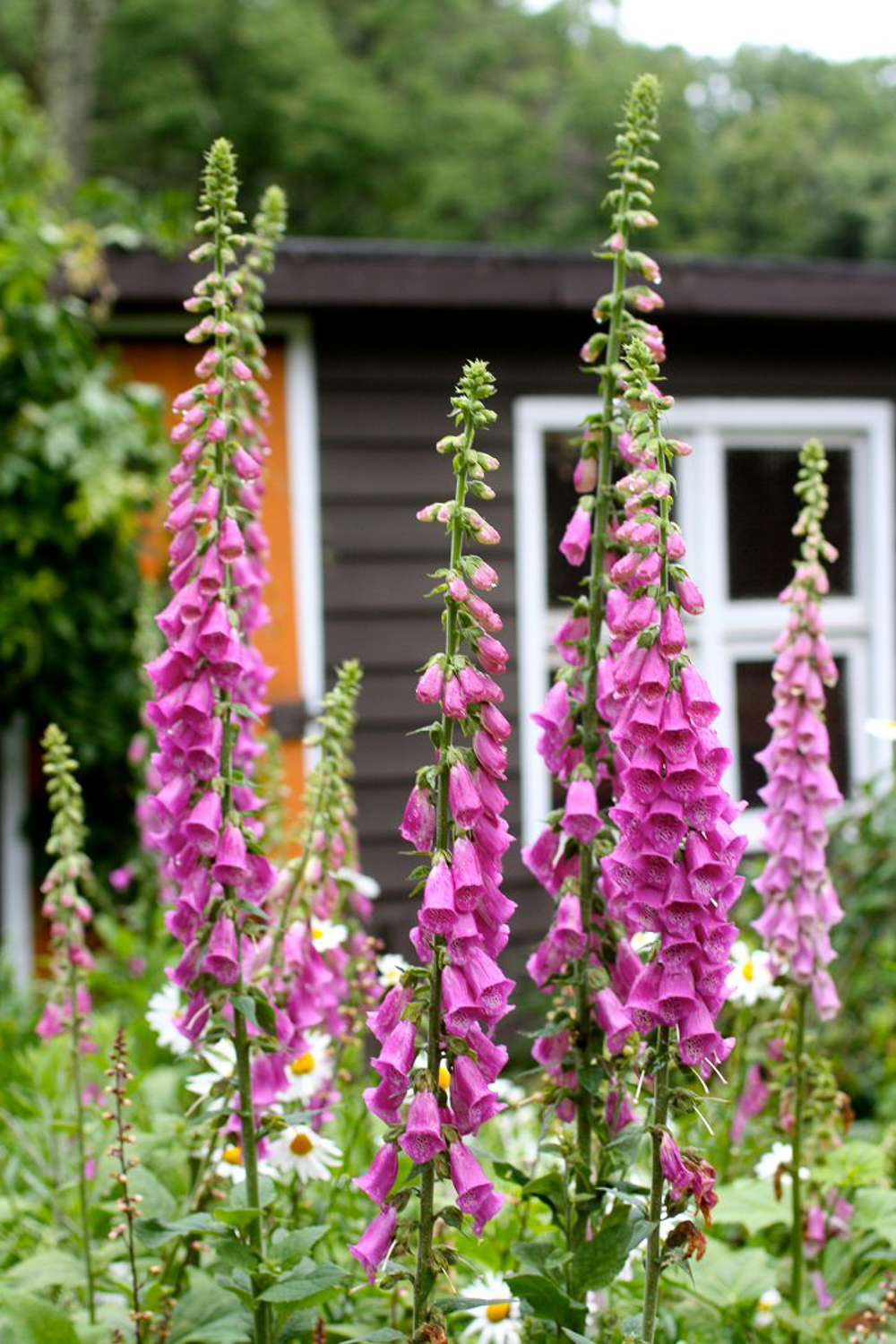
Years ago, I posted about my 2007 garden – and how it had this epic foxglove patch that was a total garden accident, created by my (then) toddlers.
Foxgloves have been on my mind ever since. That post keeps popping up on my home page, greeting me every time I come here. I think it is saying – “seriously Rochelle, plant some foxgloves, they are so easy, even toddlers can do it!”
In February, an unexpected gift arrived from a friend who works at a seed company. She has an amazing knack for sending me things I totally love, but would not have thought to try. She is kind of like a stylist, but for outfitting you in plants and seeds that totally get you outside your normal rut but absolutely suit your garden vibe.
Among other things, she sent a package of beautiful white foxglove seeds.
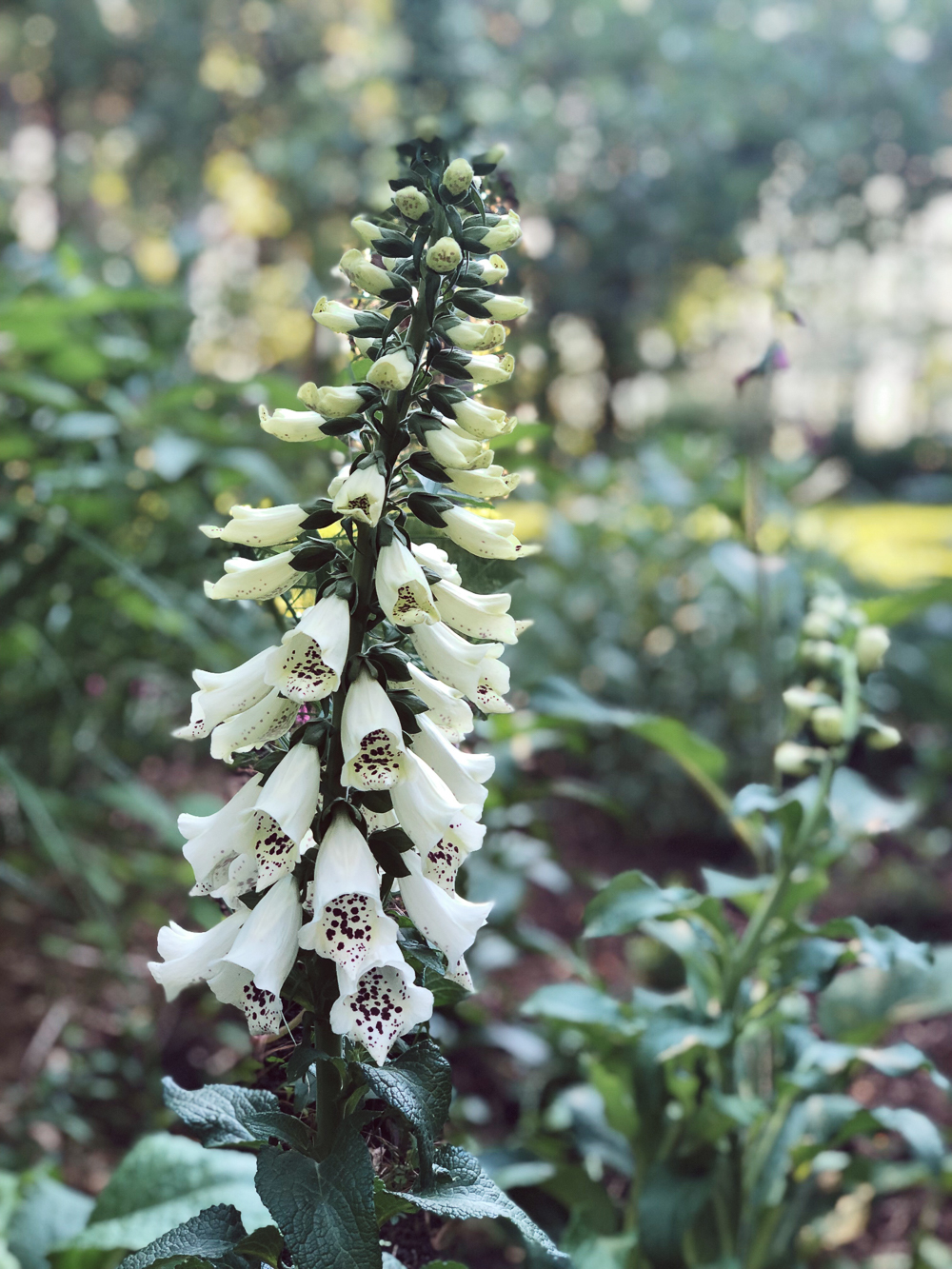
That is the universe applying peer pressure and telling me that even other people think I should be planting foxgloves.
I went to England a couple weeks ago and attended the Chelsea Flower show and the foxglove universe was talking to me again. The show was filled with these lovely plants, their tall graceful spires of flowers were everywhere and definitely on trend. I heard them saying “what else do you have that does what we do – we’re tall, we can look you right in the eye and we naturalize (sort of)!”
And then Gilmour reached out to me to see if we could work together on some garden projects that need good watering tools and I thought, yes, ok universe, I give, let’s plant some foxgloves!
Am I the only one who is getting these messages? Do you want to succumb to the calling with me?
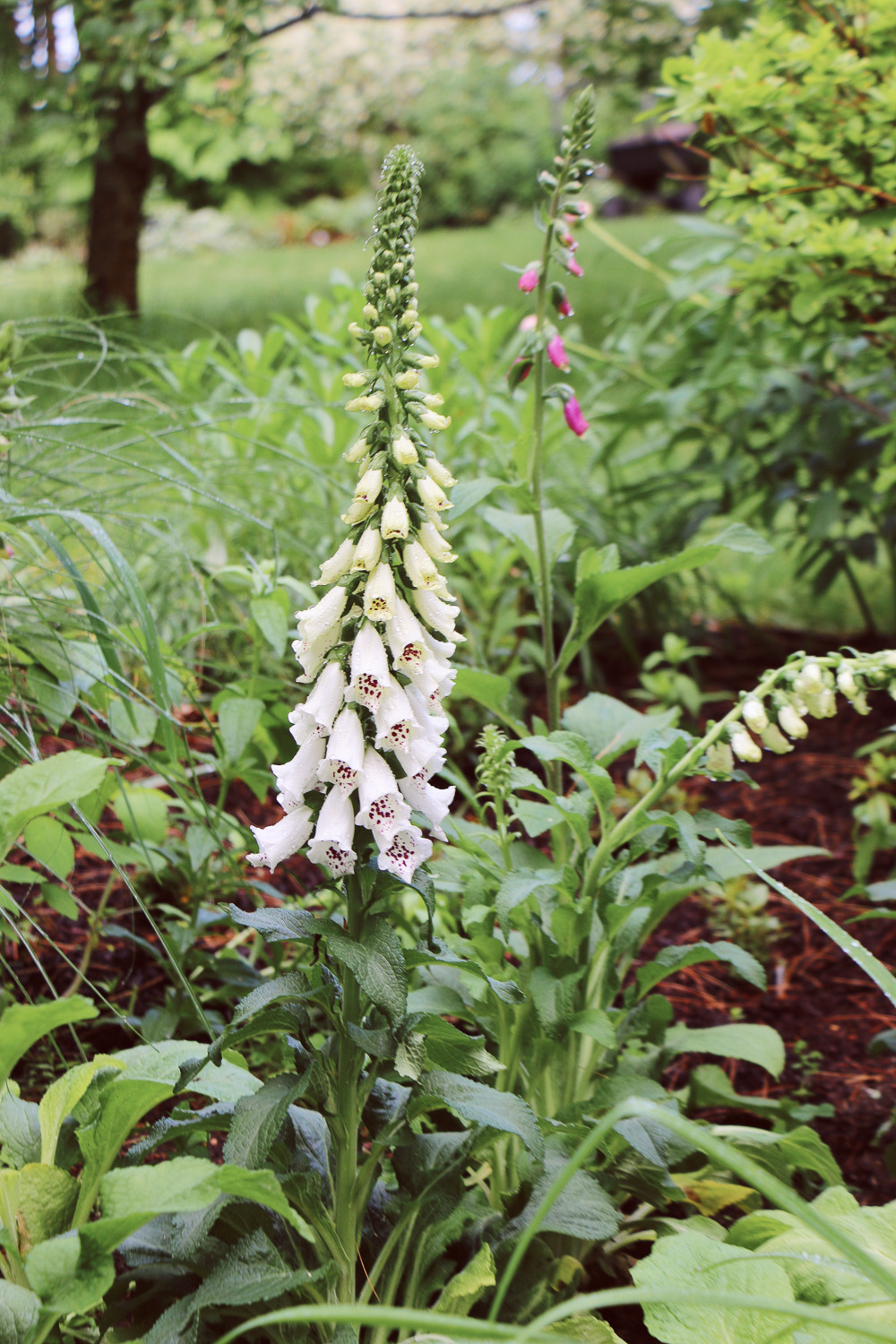
The thing about planting foxglove is that while they are totally easy – they are also a little bit tricky. Being a biennial a couple things tend to happen when you try to grow them.
Planting Biennial Foxgloves
Either you buy a plant in the store because – oh! pretty flowers! – and then you get disappointed because once it is done blooming you never hear from it again. Or you plant seeds and, like me back in 2007, you all but forget you even did it because the flowers don’t show up for 2 years. In fact, you might even be tempted to weed out the plants that would become the beautiful flower spires because honestly, they look a little like weeds that aren’t doing anything interesting.
How do you plant foxgloves so that you have a year in and year out epic display?
There are two ways.
- Plant seeds now, then plant them again next spring. In two years, you should have a good thing going. (I don’t like this method, it takes too long, and I will never remember to do something a year from now).
- Try my once-and-done biennial/ foxglove/digitalis strategy.
My once-and-done biennial foxglove/digitalis planting strategy
Let me walk you through it:
Step 1: Source seeds and two types of plants – one year old plants and two year old foxglove plants.
I hope this isn’t too troublesome for you. I found it easy enough by going to a decent nursery. It is up to you if you want all the same color – I personally am hoping for a combo of pink and white. Buy seeds and plants that are in bloom (the plants that are bloom are two year olds). The seeds, planted now, will get you flowers in 2 years, the blooming plants will get you flowers right now and, when they drop their seed later this year, they will be your insurance policy for more blooms in 2 years.
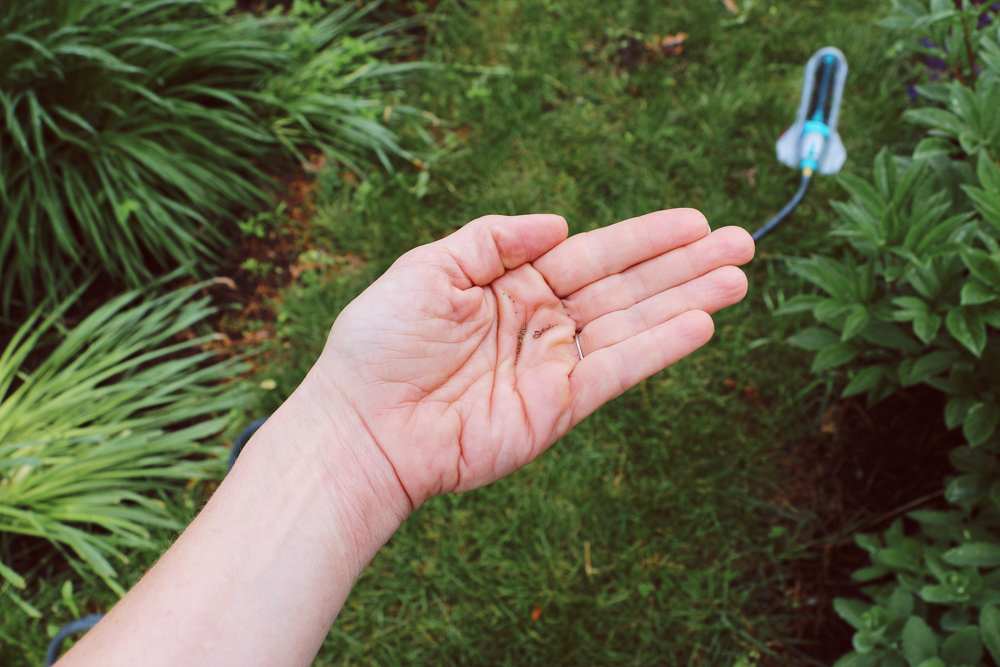
But then you need to also source plants that are just one year old (this is tricky since lots of nurseries count on the blooms to sell plants and sometimes don’t carry those that don’t. You need a smarter nursery and if you can’t find them, ask. This will encourage your nursery to offer what you need. These one year olds won’t be in bloom nor will they have stalks that look like they will bloom and they will probably look smaller than the blooming plants. Hopefully they will be segregated so you really know what you are getting.
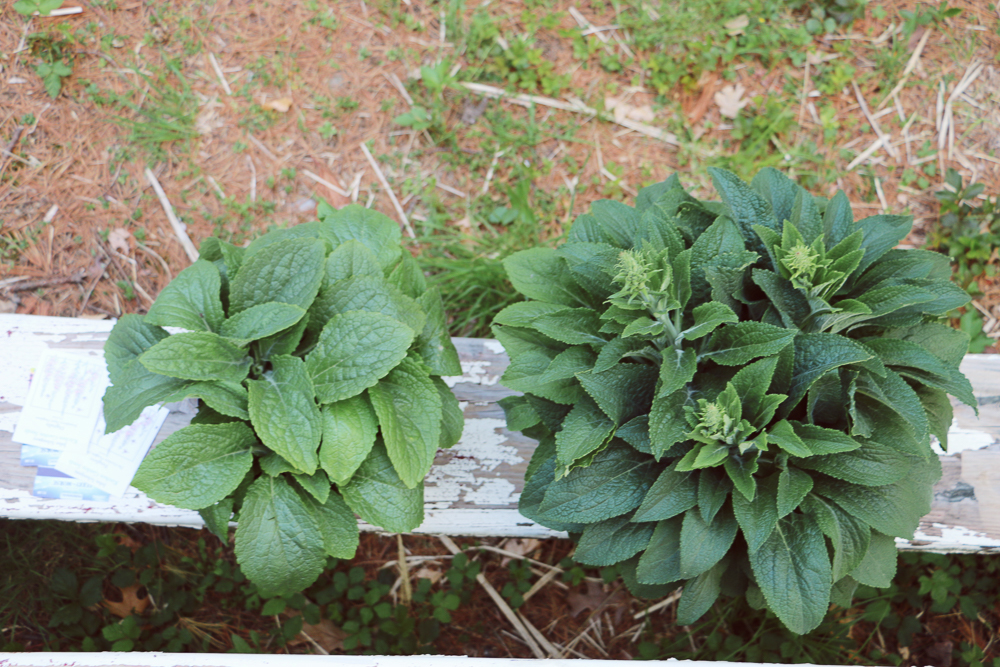
Step 2 – Prepare your plot.
Clear weeds and make sure that the soil is raked so that you can ensure good contact with the seeds. I also water the soil before I plant anything. This helps when planting seeds and plants because you don’t want to wash away your new seeds when you water in your new plants. I used a Gilmour Thumb Control Watering Nozzle (which I love because the swivel hose nozzle makes hose kinks an annoyance of the past) to make sure that I got the whole area nice and saturated. I’m planting two areas that flank the path to my shed and each area is about 3’ x 3’.
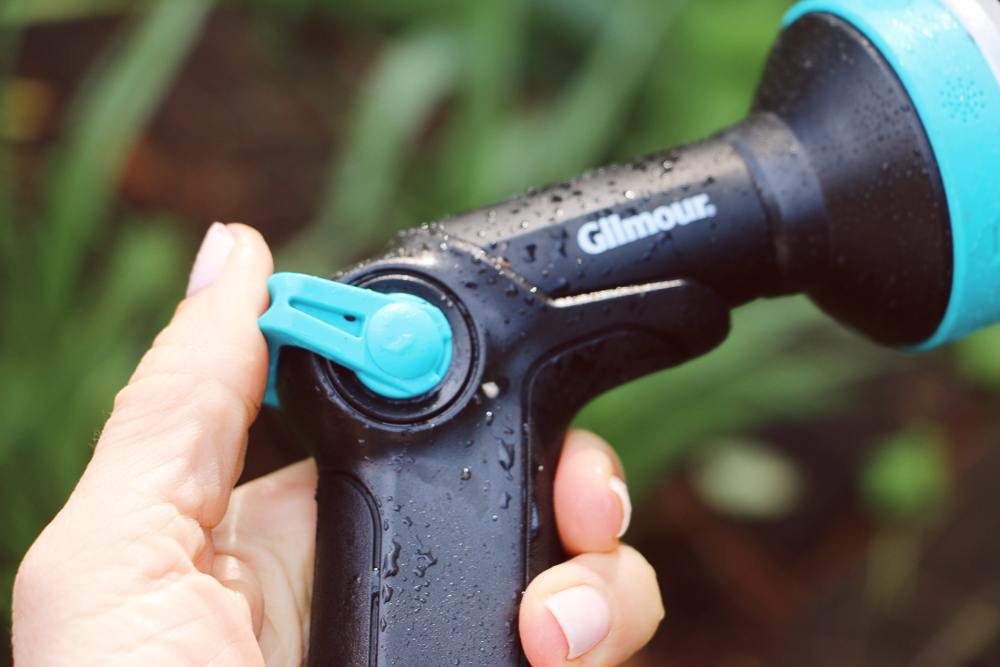
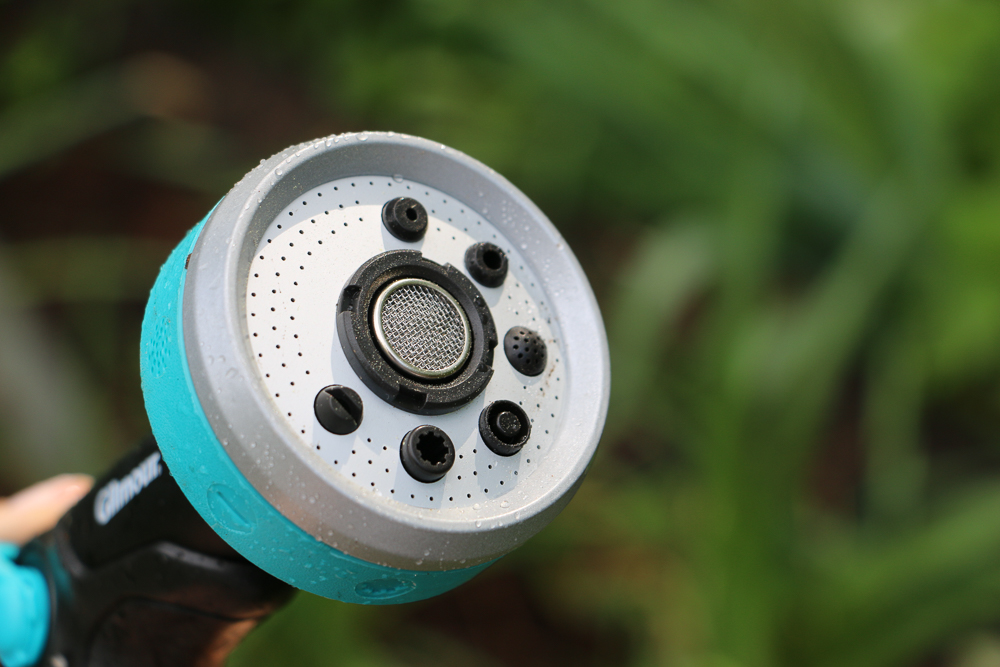
Step 3 – Plant the plants first.
For each area, I am planting 3 blooming plants and 3 one year old plants. I could fit more, but I want to leave space for spreading seed between them. I make sure to mix them up (so don’t clump the bloomers – spread things out so you have even coverage).
Step 4 – If you are mulching, keep it light.
I prefer to mulch with a compost which will provides a better medium for the seeds to germinate.
Step 5 – Water in the plants.
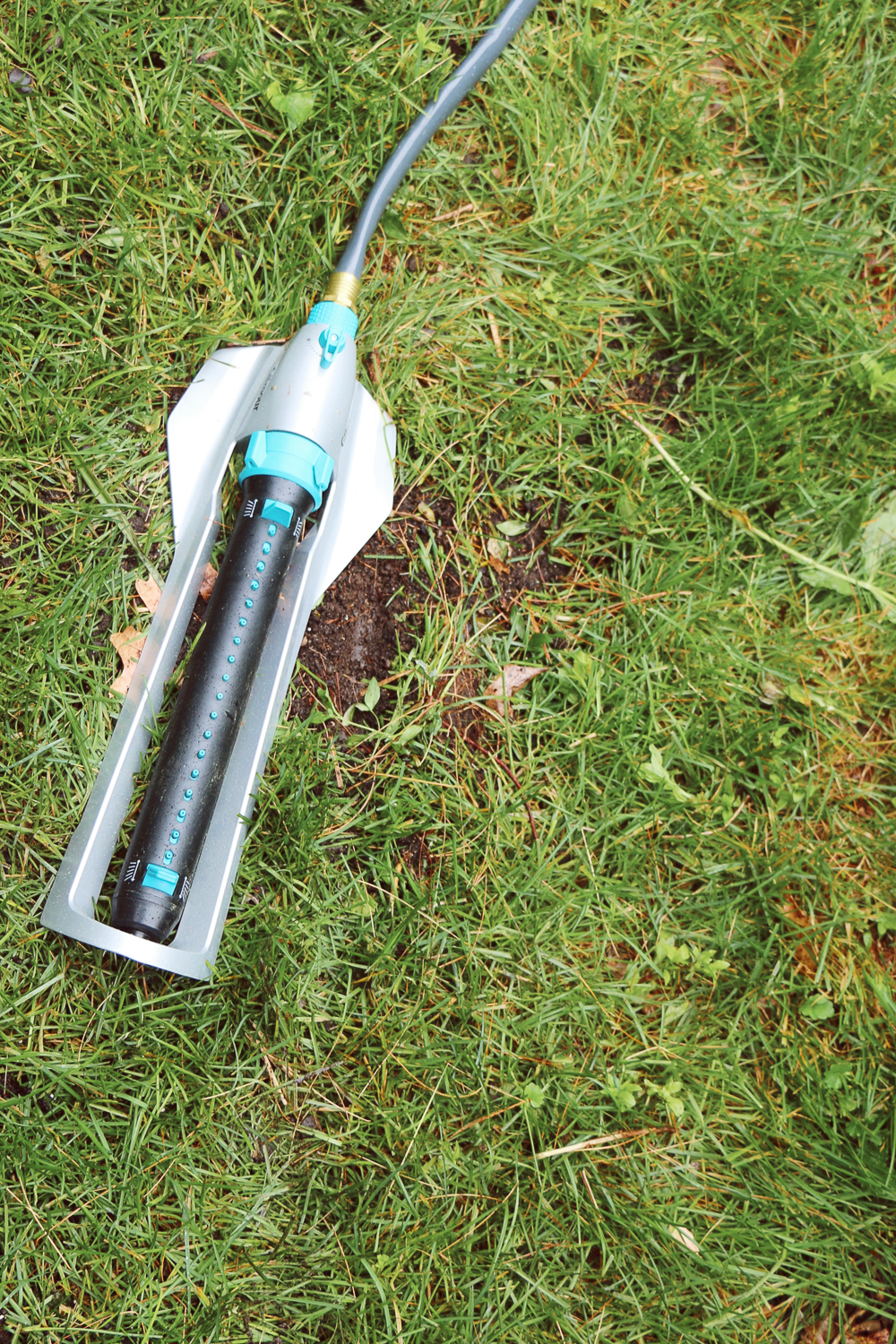
I’m a fan of gentle watering that you get from a rectangular sprinkler. Plus, I can set it to the width and height that I need so that I can easily reach both planting areas on either side of my path.
Step 6 – Spread the seeds between the plants.
Don’t bury foxglove seeds. They need light to germinate. Just sprinkle and gently press them on to the top of the soil so that they have good contact.
Step 7 – Water again.
I tend to wait a couple days before I water again with the rectangular sprinkler (since I’ve watered so well already). That way I give those tiny seeds a chance to settle in and hopefully they are less likely to wash away.
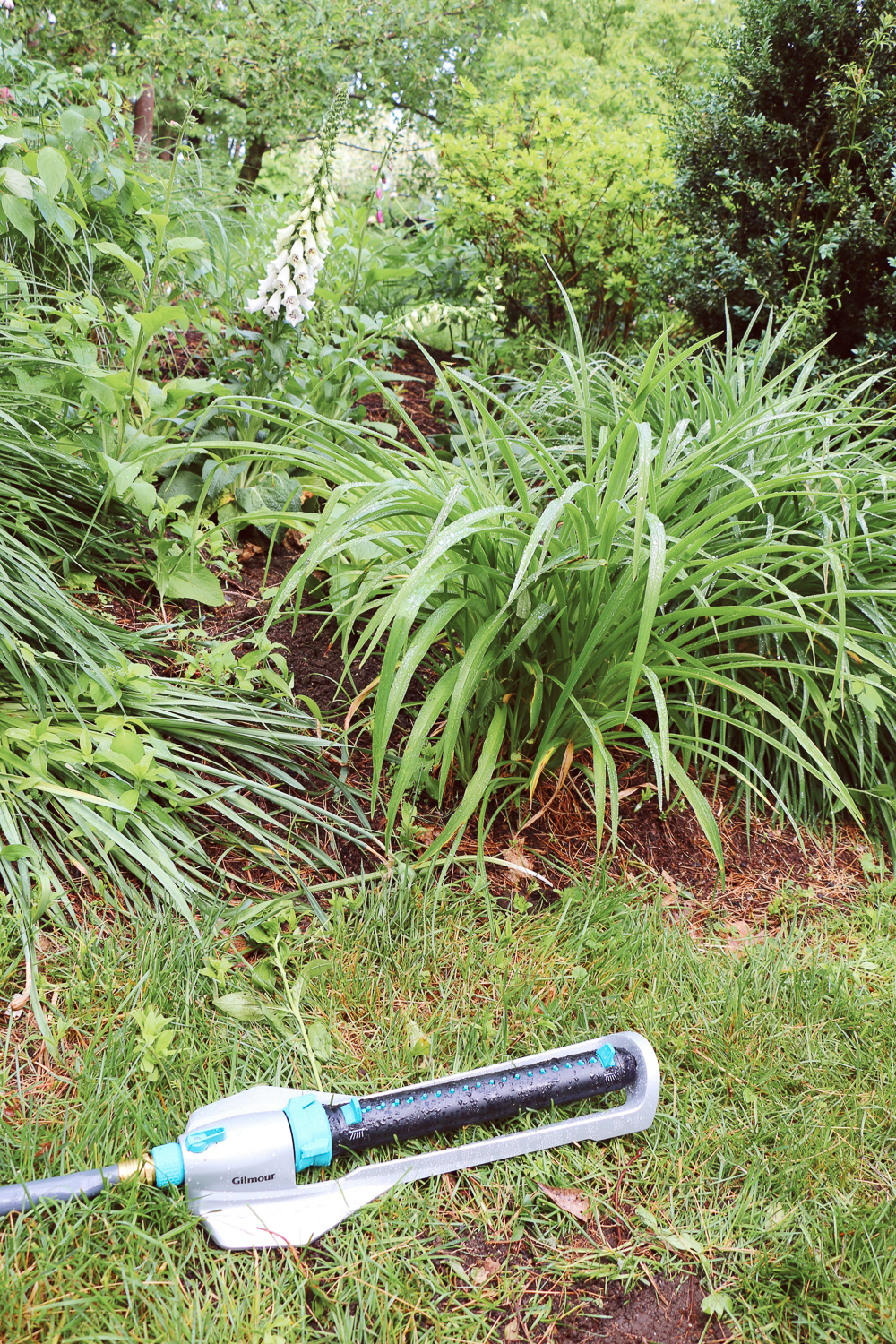
Step 8 – Shake it up.
Later this year, when the flowers are done and the stalks have dried a bit, make sure you give those stalks a good shake. This will make sure the seeds inside get spread around. You may even find that some of them start to grow into small plants by the time the first frost comes. That is great, don’t worry about them – most foxglove are hardy down to zone 4 so those baby plants will live and bloom the season after next.
That is it – I have answered the call of the universe. Hmm…I wonder what it will tell me to plant next? 😉
If you have any questions… let me know in the comments.
This post was sponsored by Gilmour. All opinions are my own. Thank you for supporting the brands that allow PITH + VIGOR to create unique and inspired content for you.
are foxglove perennial
is foxglove perennial
when do foxgloves bloom
where do foxgloves grow
foxglove seedlings
How to grow Foxgloves
do foxgloves spread
foxglove plant care
do foxgloves self seed
growing foxgloves from seed
Re foxgloves—-I planted Digitalis lutea and D. grandiflora at the same time some years ago, in a semi-naturalized bank garden with vinca, strawberry and other groundcovers. The D. lutea died out within a couple of years. The D. grandiflora has seeded itself in and about, endlessly. I wait until the are ripe, then whack them with a broom to broadcast them.